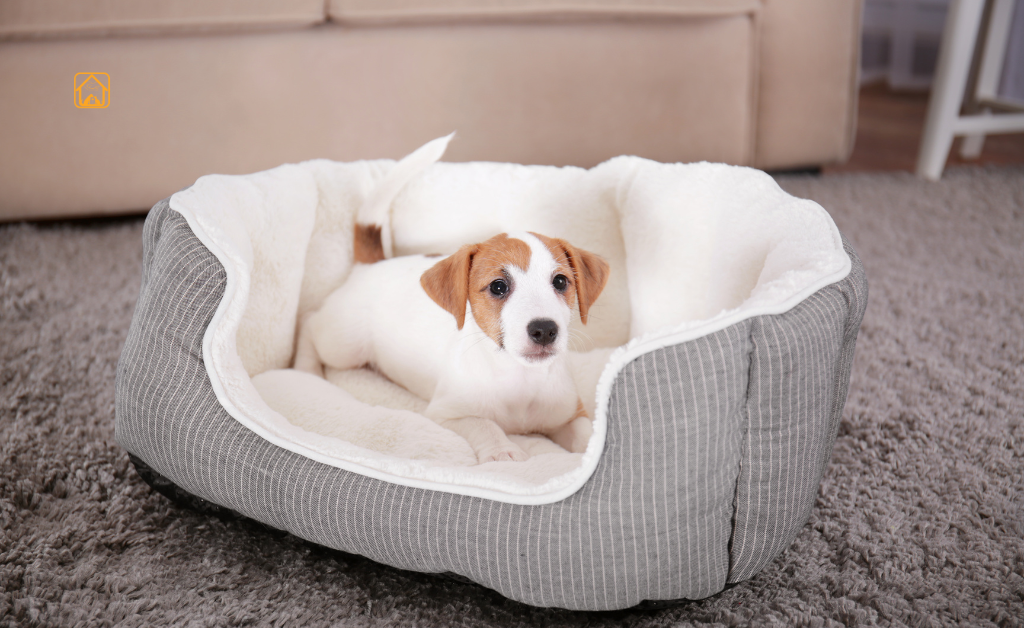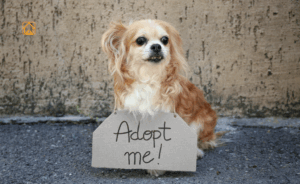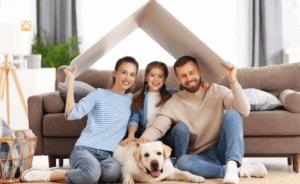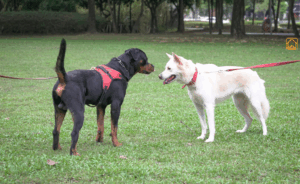Bringing home a new puppy is a mix of pure joy and a bit of chaos. One minute you’re watching them stumble across the floor, the next you’re wondering if you’re missing something important. That’s why having a new puppy checklist is a lifesaver.
Why a Comprehensive New Puppy Checklist Matters
You know what’s funny? I thought my house was ready for my first puppy, until she found the electrical cords and my favorite shoes within minutes. Turns out, it’s easy to overlook simple details. That’s why a new puppy checklist isn’t just a list; it’s peace of mind for both you and your puppy.
Puppies don’t arrive with roadmaps. They need structure, safety, and comfort from the start. A detailed checklist ensures you’re stocked with all the new puppy essentials, from food and water bowls to identification tags, grooming items, and those all-important chew toys. It also helps you avoid last-minute scrambles, like running to the store at midnight for potty pads or puppy-safe cleaner.
Puppy-Proofing Your Home
Before your furry tornado arrives, it’s time to transform your home into a puppy paradise, and a disaster-free zone. The “preparing for a new puppy checklist” is all about safety, comfort, and setting boundaries from day one. Think of it as baby-proofing, but with more fur and a lot more chewing.
Puppy-Proofing Room by Room
- Living Areas: Hide electrical cords (puppy teeth + wires = disaster). Move breakables and plants (many are toxic to dogs) out of reach. Secure trash cans with tight lids.
- Kitchen: Lock away cleaning products, human snacks, and sharp objects. Use baby gates to block off-limits rooms. Store food high up or behind closed doors.
- Bathroom: Keep toilet lids down because some puppies will drink from the bowl!. Store medications, soaps, and cosmetics in cabinets.
- Bedroom: If your pup will sleep here, remove small items like jewelry, socks, shoes that could become chew toys or choking hazards.
Setting Up Safe Spaces
- Crate or Playpen: A crate offers a cozy den and helps with house training. Place it in a quiet spot where your puppy can rest undisturbed.
- Puppy Gates: Use gates or playpens to limit access and teach boundaries. They’re lifesavers during the “chew everything” stage.
- Resting Area: Add soft bedding and safe chew toys. If you’re planning crate training, make the crate inviting with blankets and a familiar scent.
- Feeding Area: Set up bowls for food and water in a spot away from the resting area. Keep the space calm, away from foot traffic.
Outdoor Safety
- Check fences for gaps or weak spots, puppies can squeeze through the tiniest holes.
- Remove toxic plants like lilies, azaleas, or sago palm and garden chemicals.
- Secure pools or ponds. Always supervise your pup outside, especially in the first few weeks.
Honestly, puppy-proofing is a labor of love. But it’s the first big step in keeping your little explorer safe.
Must-Have New Puppy Essentials: Supplies & Gear
Wondering what to buy for a new puppy? Here’s your master new puppy checklist to buy, everything you need:
- Food & Water Bowls: Choose sturdy, non-slip bowls that are easy to clean and won’t tip over during meals.
- High-Quality Puppy Food: Pick food that matches your puppy’s breed size and age. Talk to your vet if you’re unsure.
- Treats: Get small, soft treats for training and bonding. Avoid anything too hard for tiny puppy teeth.
- Puppy Crate: A correctly sized crate helps with house training and gives your pup a cozy place to relax.
- Comfy Bed: Look for a soft, washable bed that fits inside the crate and can survive some chewing.
- Puppy Pads: Great for apartment living or early training days when accidents are common.
- Collar & Leash: Choose an adjustable collar and a no-pull harness. A strong leash keeps your pup safe on walks. Check our article on dog collar vs harness to find which is better for your pup.
- ID Tag & Microchip: Add your phone number to the tag. Microchipping offers extra peace of mind.
- Toys: Stock up on chew toys, puzzle toys, and plush toys to keep your pup busy and happy.
- Grooming Supplies: You’ll need a soft puppy brush, nail clippers, and gentle shampoo.
- Enzyme Cleaner: Accidents will happen. This helps remove stains and odors fast.
- Travel Carrier: A safe, comfy way to take your pup to the vet or on car rides.
Pro tip: Gather your puppy essentials kit before your puppy arrives, so you can focus on those first joyful days together. And don’t forget about puppy-proofing home checklist items, like baby gates and cord covers!
First 48 Hours: Bringing Your Puppy Home & Settling In
The first 48 hours with a new puppy is of excitement, a dash of chaos, and a whole lot of sniffing, exploring, and tiny puddles. But with your new puppy checklist on hand, you’ll be ready for whatever those wiggly paws throw at you.
The Car Ride Home: Calm & Safe
- Use a crate or carrier: It keeps your puppy secure and helps them feel snug in unfamiliar surroundings.
- Line with familiar bedding: Ask the breeder or shelter for a blanket or toy with mom’s scent. It’s pure comfort.
- Keep it low-key: Avoid loud music and sudden stops. If you can, have someone sit beside the crate to offer reassurance.
First Steps Inside: Explore at Puppy Pace
- One room at a time: Let your puppy sniff and explore their new home slowly. Too much freedom too fast is overwhelming.
- Show them their safe spot: Guide your pup to their crate or bed right away. This is their “den”, a place to retreat when life feels big.
- Introduce family gradually: Ask everyone (including excited kids) to sit on the floor and let the puppy come to them. No grabbing or crowding.
It’s tempting to throw a welcome party, but puppies need calm, gentle introductions. Think soft voices, slow movements, and letting your new paw set the pace.
Potty Breaks: Start the Routine Early
- Take your puppy outside immediately after arriving home, and every hour or two after that.
- Use the same spot each time. Praise enthusiastically when they go, treats and cheerleading are encouraged!
- Accidents will happen. No scolding, just clean up with an enzyme cleaner and try again.
A regular schedule is your secret weapon for fast house training. Set your phone alarm if you have to; it’s worth it.
First Meals & Settling in for the Night
- Offer a light meal of the same food they’ve been eating. Sudden changes lead to upset tummies.
- Make sure water is always available, but not too close to bedtime to avoid midnight potty runs.
- During nighttime expect some whimpers. Place the crate nearby so your puppy can hear and smell you. Sometimes, a ticking clock or warm (not hot) water bottle helps mimic the comfort of littermates.
The first night can be tough. But by morning, you’ll both be a little braver.
Setting Up Your Puppy’s Space: Crates, Bedding, and Safe Zones
Every puppy needs a place to call their own. Whether it’s a crate, a cozy bed, or a quiet corner, this space is your puppy’s go-to for naps and comfort. I remember my own pup resting in his crate after a wild play session. It became his sanctuary, especially when the world felt big and new.
- Crate: Should allow your puppy to stand, turn around, and lie down comfortably. Look for adjustable dividers to grow with your pup.
- Bedding: Choose washable, soft bedding. Avoid anything with loose stuffing for chewers.
- Safe Zone: Set up the crate or bed in a quiet area, away from heavy foot traffic. Add a favorite toy or two for comfort.
Feeding Your New Puppy: Food, Bowls & Nutrition Basics
What do puppies need at 8 weeks? Nutrition is at the top of the list. Puppies grow fast, so they need energy-dense, balanced food, designed just for them. Stick with the diet your breeder or rescue recommends at first, then transition slowly if needed.
- Puppy Food: Look for formulas labeled “complete and balanced” for puppies. Check with your vet for specific breed needs.
- Feeding Schedule: Most puppies eat 3-4 times a day. Monitor portion sizes to prevent overfeeding.
And a little secret? Keep treats healthy and small, training goes smoother when you’re not overdoing the calories. Check out our full guide to puppy feeding for everything you need to know.
First Vet Visits & Health Essentials
That first trip to the vet can be nerve-wracking, but it’s crucial. Your new puppy checklist vet includes:
- Initial Health Exam: Check for parasites, heart and lung health, and overall development.
- Vaccinations: Puppies need core vaccines (distemper, parvo, etc.) starting at 6-8 weeks.
- Microchipping: Ask about microchipping for permanent ID.
- Parasite Prevention: Discuss flea, tick, and worm treatments.
- Insurance: Consider pet insurance for peace of mind.
Bring a list of questions, vaccination records, and any concerns. Your vet is your partner in puppy care, don’t be shy!
Training, Socialization & The First 48 Hours
The first 48 hours with a new puppy are magical, and a little chaotic. Your puppy is learning about their new world, so start with gentle routines:
Training: Start Simple, Stay Positive
- Basic commands: Begin with sit, stay, and come. Use treats, patience, and lots of praise. Keep sessions short, 5 minutes is plenty for tiny attention spans.
- Consistency: Use the same words and hand signals every time. If you say “down” today and “off” tomorrow, your puppy will be just as confused as you are before coffee.
- Crate training: Introduce the crate as a safe, happy place. Never use it for punishment. Toss in treats and toys, and let your puppy explore at their own pace.
Pro tip: Reward the behavior you want to see. Ignore or gently redirect what you don’t. Puppies crave your approval, it’s their favorite treat.
Socialization: The Secret Sauce for a Confident Dog
- Expose to new experiences: Meet friendly people, other vaccinated dogs, bikes, vacuum cleaners, the works.
- Go at their pace: If your puppy seems scared, don’t force it. Offer treats and encouragement, and try again later.
- Enroll in puppy classes: Great for socialization and basic obedience. Plus, you’ll meet fellow puppy parents who “get it.”
Check out our full guide to puppy training for everything you need to know.
Puppy Grooming, Hygiene & Safety Tips
Keeping your puppy clean isn’t just about looking cute (though, admit it, it helps!). Regular grooming builds trust and keeps your pup healthy.
- Brush your puppy’s coat gently a few times a week.
- Trim nails carefully, ask your vet or groomer for a demo.
- Baths: Use puppy-specific shampoo, and only when needed.
- Check ears and teeth regularly; early habits make future care a breeze.
- Clean up accidents quickly with enzyme cleaner to remove odors.
Always keep an eye on playtime, puppy-proofing isn’t a one-time task. As your puppy grows, so does their curiosity, and what was safe yesterday might be today’s mischief zone.
FAQs: Everything New Puppy Owners Need to Know
What should I buy before bringing a new puppy home?
Gather food and water bowls, puppy food, a crate, comfy bed, collar with ID tag, leash, puppy pads, safe toys, grooming supplies, and an enzyme cleaner. Prep your home with gates or playpens for safety. This core new puppy checklist covers the basics for a smooth transition.
How do I puppy-proof my home?
Store dangerous items (cleaners, cords, small objects) out of reach. Block off unsafe rooms, secure trash cans, cover outlets, and use gates as needed. Check your yard for holes and toxic plants. A dedicated puppy-proofing home checklist keeps your curious pup safe.
When should my puppy visit the vet?
Ideally, within the first few days at home. Your vet will check for health issues, start vaccinations, discuss parasite prevention, and answer questions. Bring any breeder or shelter records to your first appointment.
What are the best ways to socialize my puppy?
Expose your puppy to new people, sounds, and environments in a gentle, positive way. Use treats and praise for calm behavior. After vaccinations, introduce other friendly pets and short outings to build confidence. Early, positive experiences shape a well-adjusted adult dog.
How do I start potty training?
Take your puppy out first thing in the morning, after meals, and every couple of hours. Praise and reward for going in the right spot. Accidents happen, clean up with enzyme cleaner and stay patient. Consistency is the secret to house training success.
Are there items new puppy owners often forget?
Some commonly missed essentials: ID tags, puppy-safe cleaning products, travel carrier, a first-aid kit, and a variety of chew toys. Remember, puppies go through teething stages and need safe, soothing items.
What do puppies need at 8 weeks?
They need regular, balanced meals, a safe sleeping area, basic vet care (vaccinations, parasite check), gentle handling, and lots of short, positive experiences. Structure and patience help your puppy feel secure as they adjust to their new home.
Conclusion
Bringing home a new puppy is joyful, challenging, and downright unforgettable. With this new puppy checklist, you’ve got the tools and confidence to welcome your new best friend home. You’re not just preparing your house; you’re building the foundation for years of love and happy memories. Enjoy every puppy kiss and wag, you’ve earned it!



